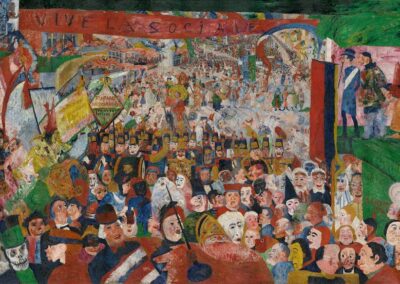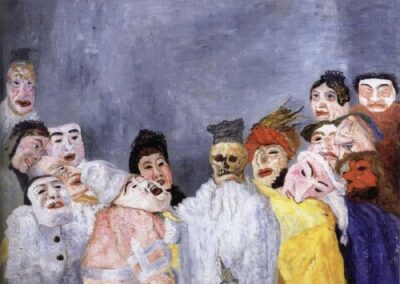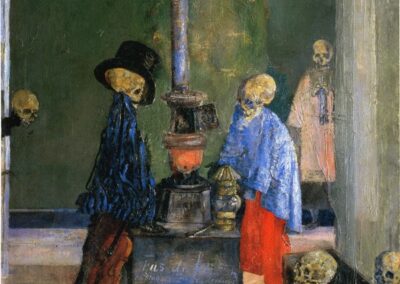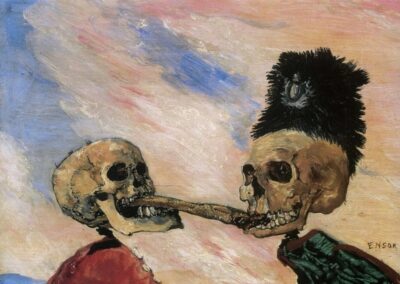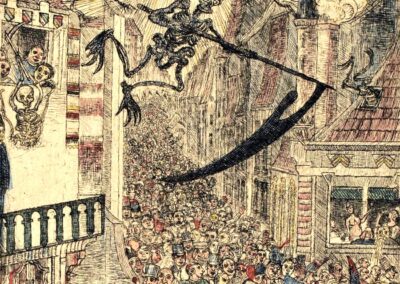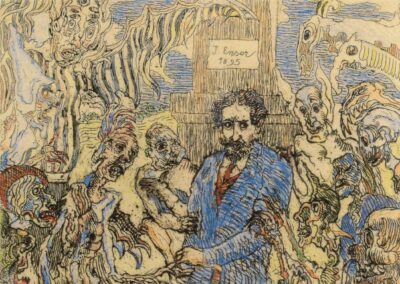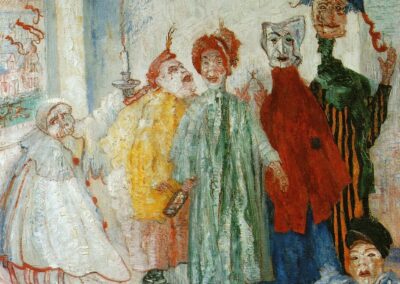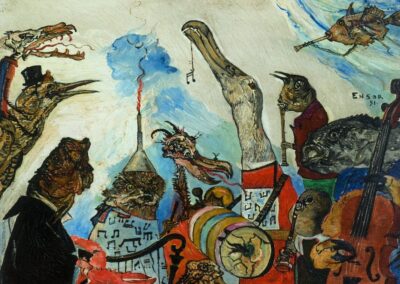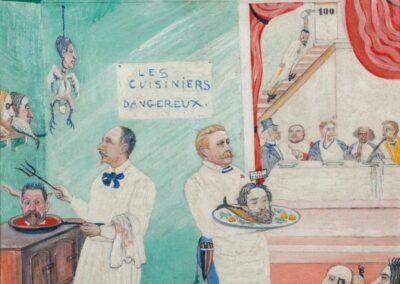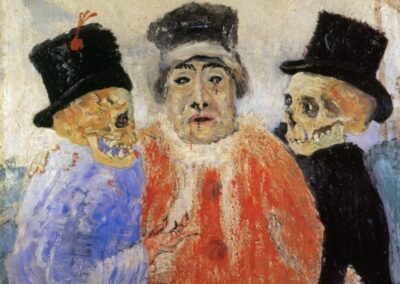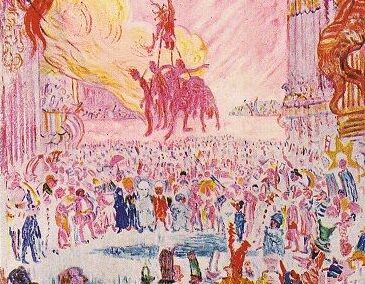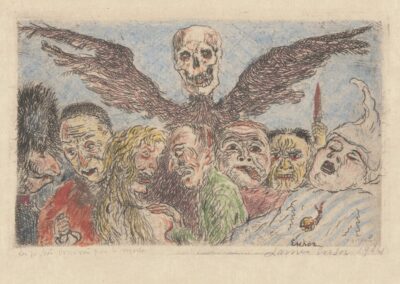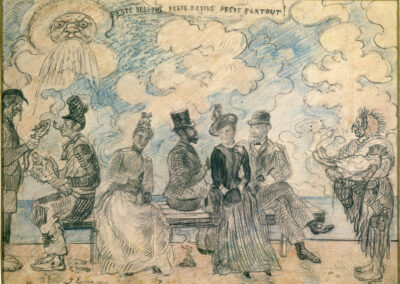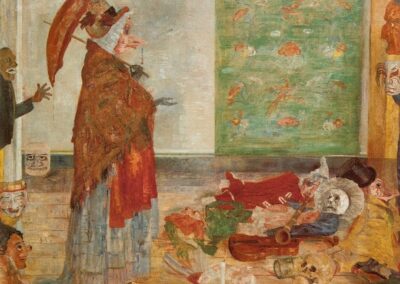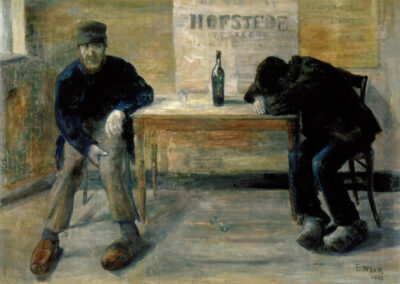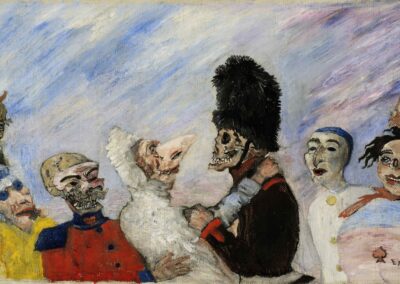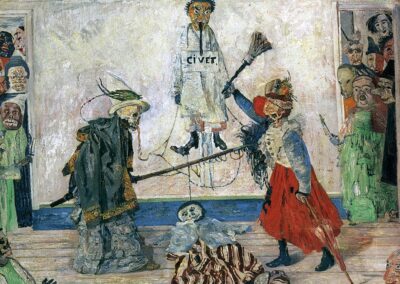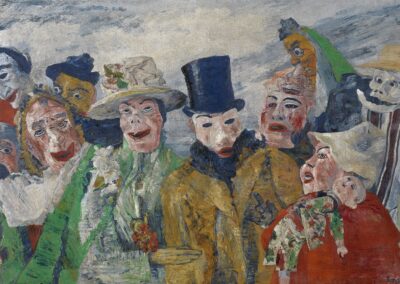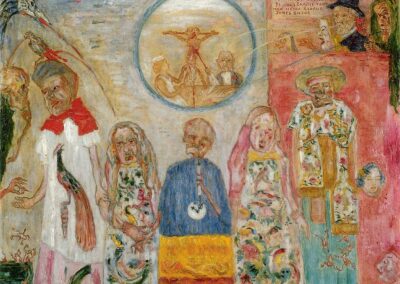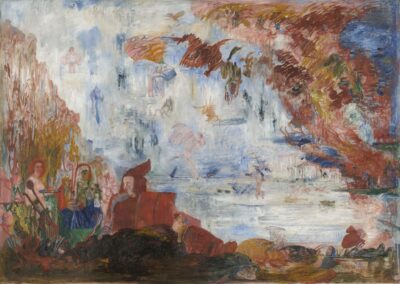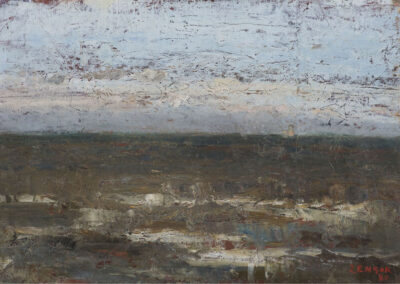The next Artist You Need To Know is James Ensor (1860 – 1949).
Ensor (born James Sidney Edouard, Baron Ensor) was a Belgian painter and printmaker and arguably one of the most important and influential artists in the spheres of both Expressionism and Surrealism during the first half of the twentieth century. Like a previously featured Artist You Need To Know – Léon Spilliaert – Ensor spent the majority of his life living in Ostend in Belgium and (again like Spilliaert) Ensor’s figures and scenes are haunting and offer evocative tableaux rife with emotion and symbolism. He was also associated with the artistic group Les XX.
From the art historian Tish Blackwood : “No single label adequately describes the visionary work produced by Ensor between 1880 and 1900, his most productive period. His pictures from that time have both Symbolist and Realist aspects, and in spite of his dismissal of the Impressionists as ‘superficial daubers’ he was profoundly concerned with the effects of light. His imagery and technical procedures anticipated the coloristic brilliance and violent impact of Fauvism and German Expressionism and the psychological fantasies of Surrealism. He was largely unrecognized before the 1920s in his own country. His work was highly influential in Germany, however: Emil Nolde visited him in 1911, and was influenced by his use of masks; Paul Klee mentions him admiringly in his diaries; Erich Heckel came to see him and painted his portrait. Marc Chagall and [previously featured AYNTK] George Grosz also adapted certain elements from Ensor.”
“Vision changes while it observes.”
Ensor – unlike his parents – was not particularly interested in the traditional academic sphere and schooling and was a sporadic student. At the age of fifteen he abandoned school to pursue his interest in art with two local painters (Michel Thomas Anthony Van Cuyck and Édouard Dubar).
He would attend the Académie Royale des Beaux-Arts in Brussels (1877 – 1880) : even at that young age he was already feeling stifled by the pedantic nature of the art education there, and was nearly expelled on several occasions. For example :”The moment I arrived, a big problem appeared on the horizon. I was ordered to draw Octavius, the most august of the Caesars, from a white plaster bust. The snowy plaster horrified me. I reproduced it with vibrant pink chicken skin, reddening the hair and causing a great commotion among the students.” Upon his departure from the school, he dismissed them as an “establishment of the short-sighted.”
From here : “Although educated in traditional painting, Ensor quickly stepped off that path and began to develop a revolutionary style that reflected his own take on modern life. He was particularly fascinated with the popular carnival culture organized around the celebration of Mardi Gras each year throughout Belgium, most certainly influenced by the fact that his family’s shop in Ostend was a main purveyor of carnival paraphernalia. The imagery he produced is consistently cynical and mocking; presenting an almost grotesque form of Realism meant to record the stresses underlying contemporary social morays of his time, and probably of all times.”
“The mask means to me: freshness of color, sumptuous decoration, wild unexpected gestures, very shrill expressions, exquisite turbulence.”
Ensor began showing his artworks in 1881. For nearly the next three decades, Ensor lived and worked in his parents’ house in Ostend : this was broken up by sporadic and rare trips to France, the Netherlands (both in the 1880s) and visit to London for four days in 1892.
Unsurprising (considering the anecdote related above about Ensor’s experiences at art school) much of his work was considered too transgressive and often ‘fostered’ scandalous or horrified reactions at the start of his career, but also attracted attention and praise for his unique vision and the manner in which he blended styles and could both unsettle and attract the viewer. Ensor took this in stride, sometimes firing back at critics (an amusing 1887 etching Le Pisseur is a self portrait of Ensor urinating on a wall that has the phrase (quoted from one of his detractors) that Ensor est un fou [Ensor is a Madman].
Others recognized his importance, such as the Belgian art critic Octave Maus who dismissed the comments from his brethren who attempted to pan Ensor’s expressive and often political paintings, and offered that “Ensor is the leader of a clan. Ensor is the limelight. Ensor sums up and concentrates certain principles which are considered to be anarchistic. In short, Ensor is a dangerous person who has great changes. …
“My art tends toward the literary. My pictures tend toward the outskirts of painting: But why generalize? It is possible to realize one thing or another, according to the impressions gained from one point of view or another. But it is too difficult to make a general rule.”
By the 1920s Ensor was exhibiting widely with several major exhibitions of his work in his native Belgium and beyond. In 1929 he was named a Baron by King Albert, and was the subject of the Belgian composer Flor Alpaerts’s James Ensor Suite; and in 1933 he was awarded the band of the Légion d’honneur.
As the 20th century progressed, Ensor painted and produced fewer and fewer artworks, choosing instead to focus on music. He was a talented improvisor on the harmonium, despite having no formal training. Ensor chose not to flee Ostend during WW II : this is unsurprising considering that it had always been his creative base.
His work can be found in numerous collections, including Musées Royaux des Beaux-Arts de Belgique (Brussels), The Art Institute of Chicago (USA), Kröller-Müller Museum (Otterlo, Netherlands), The Museum of Modern Art (New York, USA), The J. Paul Getty Museum (Los Angeles, USA) and (of course) the Ensor Museum, Ostend, Belgium.
Considering the early rejections and dismissals from critics, it’s interesting to note that Alfred H. Barr Jr. (the founding director of MOMA in New York) asserted that “Ensor was the boldest painter working at that time” when Barr experienced Ensor’s 1887 painting Tribulations of Saint Anthony. That work is now in the MOMA collection.
Ensor died at the age of 89, in 1949 in Ostend after a short illness. He had become a recognized and well known figure as he wandered Ostend (again, marking a similarity to Léon Spilliaert).
More about his life and work, and his important role in the art of Europe in the early twentieth century, can be seen here.

